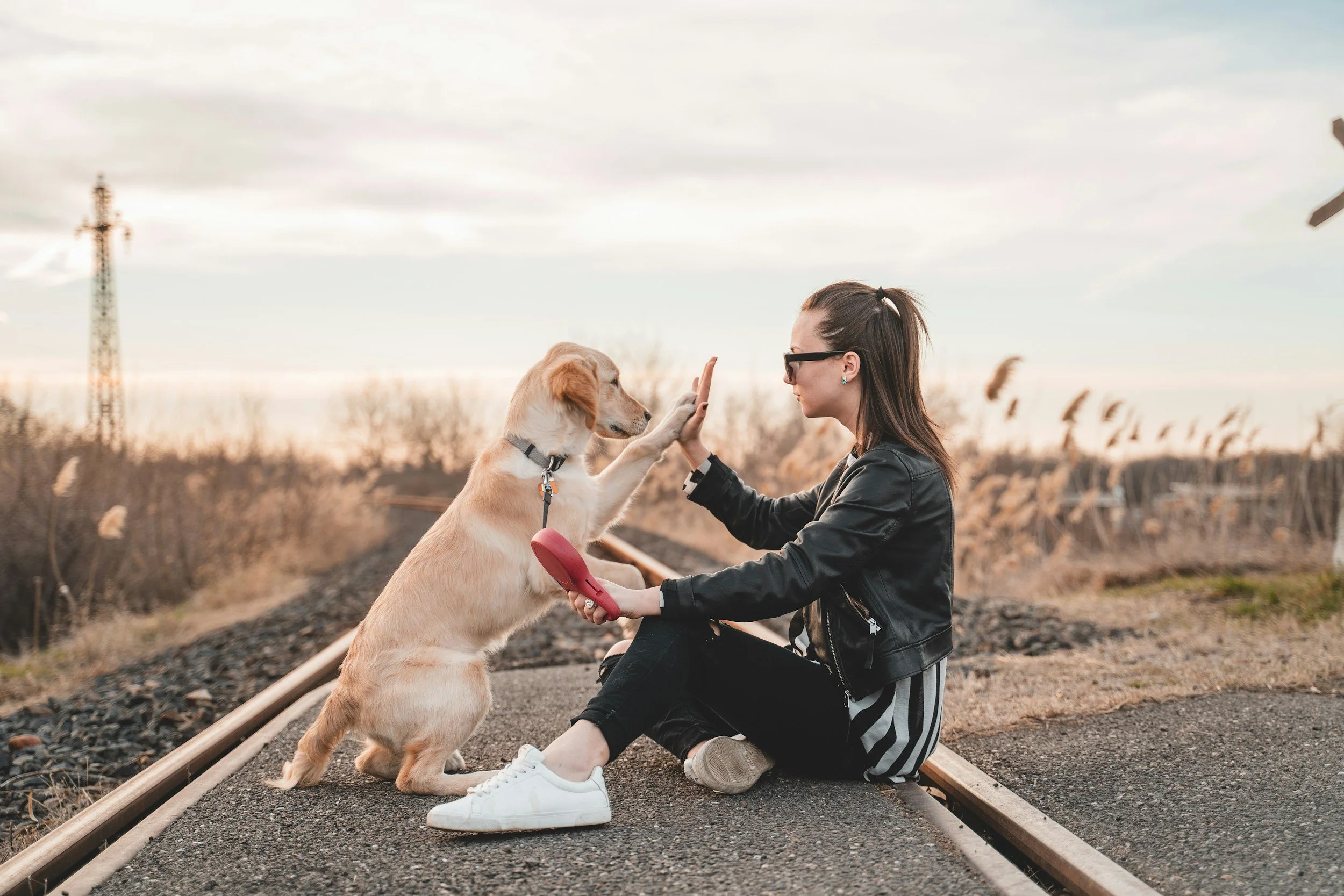What Makes a Balanced Dog Trainer?
Dog training is full of opinions, methods, and philosophies, but is there truly a “right” or “balanced” method? From purely positive reinforcement to more correction-based approaches, the world of dog training varies. In the middle of that spectrum sits the balanced dog trainer. But what does that really mean? And how does it impact your dog?
Let’s break down what it means and why NLR uses balanced training.
What Is a Balanced Dog Trainer?
Balance is a must in life, and for training dogs!
A balanced dog trainer uses a combination of rewards (like treats, praise, toys) and corrections (like leash pressure, verbal markers, or tools like prong collars or e-collars and other tools) to teach dogs. The goal is to clearly communicate both what we do want from the dog and what we don’t. To break down and address the root cause of the behavior
It’s not about punishment or dominance; it’s all about clarity and fairness. A balanced trainer understands that just like humans, dogs learn best when they have both motivation and boundaries. Balanced training with NLR focuses on my background in animal behavior, veterinary technician training, and even nutrition. We get to the root of the behavior instead of just programming a new behavior in the place of the old, using a treat or punishment.
We here at NLR want the dog to truly understand the command and not just follow blindly. Instead, it’s about following commands based on the dog’s want for praise, a job well done, and the relationship with their owner above all else.
The 4 Pillars of Learning- or Dog Training Methods
There are many different types of training methods for dogs, and a combined approach is often best.
Balanced training is rooted in learning theory — specifically, the four quadrants of operant conditioning:
Positive Reinforcement – Adding something the dog likes (like a treat) to increase a behavior. Ignoring the bad behaviors and instead rewarding only positives using food or treats to build drive for the new behavior. Often only works temporarily and not in stimulating environments. Also, creates a reward system where listening is only required when there is a transaction between owner and dog.
Negative Reinforcement – Removing something the dog dislikes (like leash pressure) when they do the right thing. Punishing the negative behavior and making it uncomfortable for the dog so they don’t want to do the bad thing anymore. This more dominant or alpha style of training produces anxious and non-confident dogs who are fearful of their owner.
Positive Punishment – Adding something unpleasant (like a verbal “No”) to reduce a behavior. Often used by treat trainers to mark negative behaviors without adding a punishment to establish a negative word association with the undesirable behavior.
Negative Punishment – Removing something the dog likes (like attention or a toy) to reduce a behavior. Often used by force-free trainers to crate train, or offer a “mild or force-free correction” for negative behavior. Most often seen in crate training or resource guarding in puppies.
A balanced trainer uses all four, not just one. Why? Because life uses all four, and dogs live in the real world, not just in a training bubble. Every dog is different, and using the best method for the dog while applying the principles of balanced training, in our experience, has the best chance of confident dogs and owners.
Why Balance Matters, and the NLR Way
Here at NLR, we teach a structured, balanced, holistic training method to both dogs and their humans.
Dogs, like people, thrive on structure. Who can honestly say they love change? They need to know what behaviors earn them rewards, and what behaviors aren’t acceptable. Just like kids growing up, we are taught pro-social and anti-social behaviors. As dogs grow and learn, they learn what’s accepted and not. Balanced training with NLR teaches:
Clarity: Dogs learn faster when communication is consistent.
Accountability: Just like we don’t get rewarded for everything we do, dogs learn that not all behaviors are okay.
Freedom: When dogs are well-trained, they can enjoy more freedom off-leash, in public, or in social settings.
Confidence: Confident dogs start here isn’t just a cool tag line. Our dogs learn confidence independently and together with their owners.
Lifelong success: With our method, we see dogs not just being successful with a trainer or for a few weeks after training, but for their entire life.
Contrary to what some may think, balanced training isn’t about being harsh — it’s about being honest, clear, and fair. We focus on building trust and a fair relationship between the owner and their dog.
Is Balanced Training Right for Every Dog?
Some dogs require a different approach, but adjusting expectations is key to dog training.
Not every dog is the same, and a balanced trainer takes that into account. Some dogs respond quickly to reward-based methods, while others may need firmer boundaries to break unsafe habits like leash reactivity, jumping, or resource guarding. Where our training has a 100% graduation rate, not every dog is a fit; that’s why we start with our evaluation, creating a clear understanding and goals for training is paramount.
A skilled, balanced trainer adjusts their tools and techniques based on the dog in front of them, not on a one-size-fits-all philosophy.
Final Thoughts
Our trainers at NLR can help find a training plan that’s right for you and your pup!
Being a balanced dog trainer isn’t just about using treats and tools. It’s about understanding dog psychology, applying real-world experience, and helping dogs and owners thrive together. At its core, balanced training is a relationship-based approach that prioritizes communication, respect, and results.
In a world full of extremes, balance isn’t just a method; it’s a mindset.
With experience and holistic guidance, our trainers are ready to meet you where you are and create a truly remarkable experience and new bond with your dog. Reach out to us today to talk about training!




